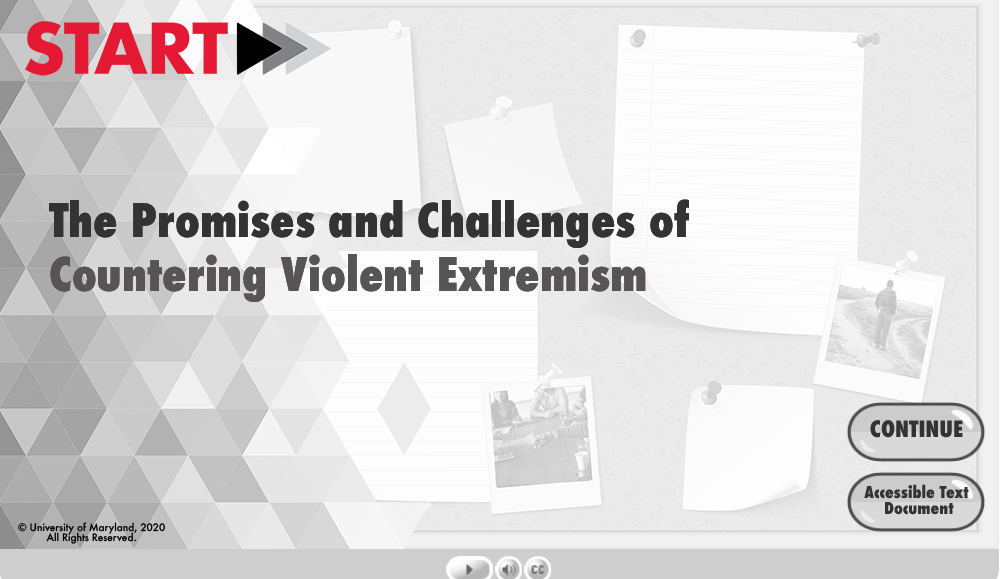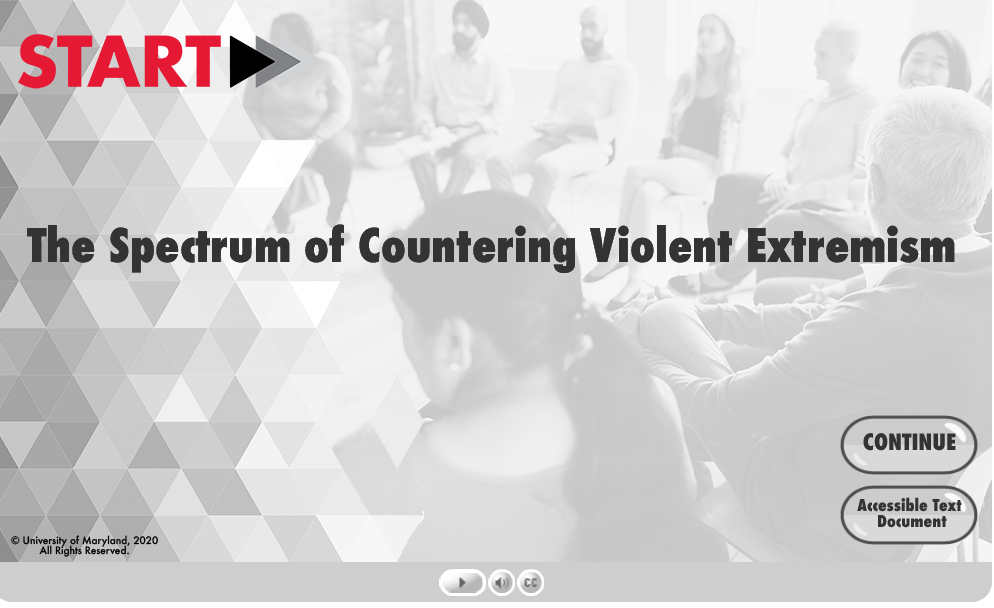START has produced a series of short (five minutes or less), interactive lessons designed to improve learners' knowledge of violent extremism and countering violent extremism (CVE). Countering Violent Extremism (CVE) is a way of addressing violent extremism in communities, encompassing programs, policies and activities that are intended to prevent individuals and groups from radicalizing to violence and to rehabilitate individuals who have engaged in violent extremism.
Currently Available:
|
Defining Violent Acts: Hate Crimes, Targeted Violence, and Terrorism differentiates between the terms hate crime, targeted violence, and terrorism, and discusses the overlap between them. |
|
 |
The Promises and Challenges of Countering Violent Extremism describes how the implementation of CVE faces numerous challenges, with the solutions to those challenges being community-specific and likely requiring careful consideration and long-term planning. It also outlines how CVE provides an alternative to what can be invasive counterterrorism disruptions. By building on the strengths of an individual, community, or society, CVE programs enhance their strengths and make them more resistant to violent ideologies, and more resilient to the polarizing impacts of extremist violence should they occur. |
 |
The Spectrum of Countering Violent Extremism examines the behaviors, actors, and activities involved in CVE. CVE draws from a spectrum of community-based programs, policies, and activities focused on preventing individuals from adopting the belief that illegal violence is a necessary and legitimate way to advance an ideological goal, conducting interventions with individuals at risk of directly participating in or facilitating violence, and rehabilitating and reintegrating individuals previously engaged in violence. |

.png)